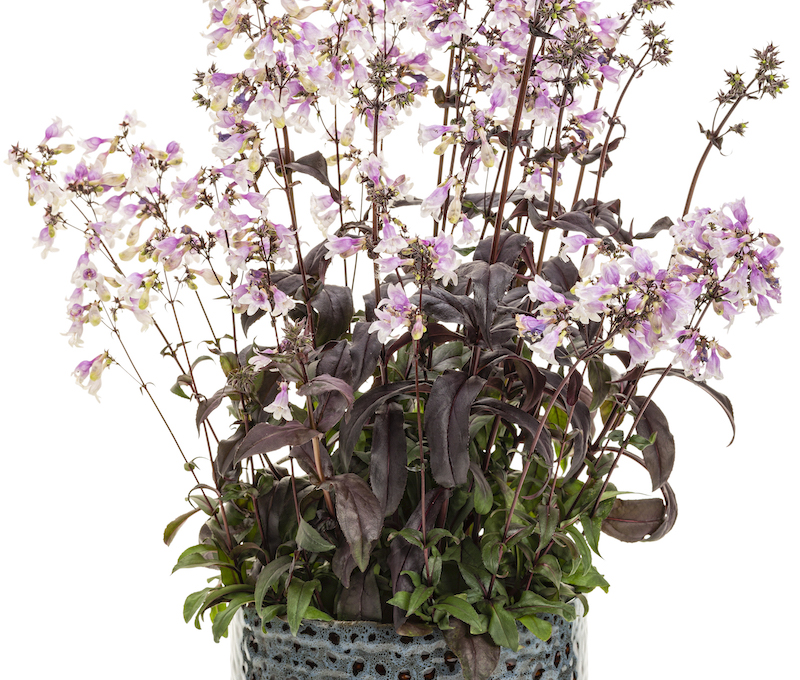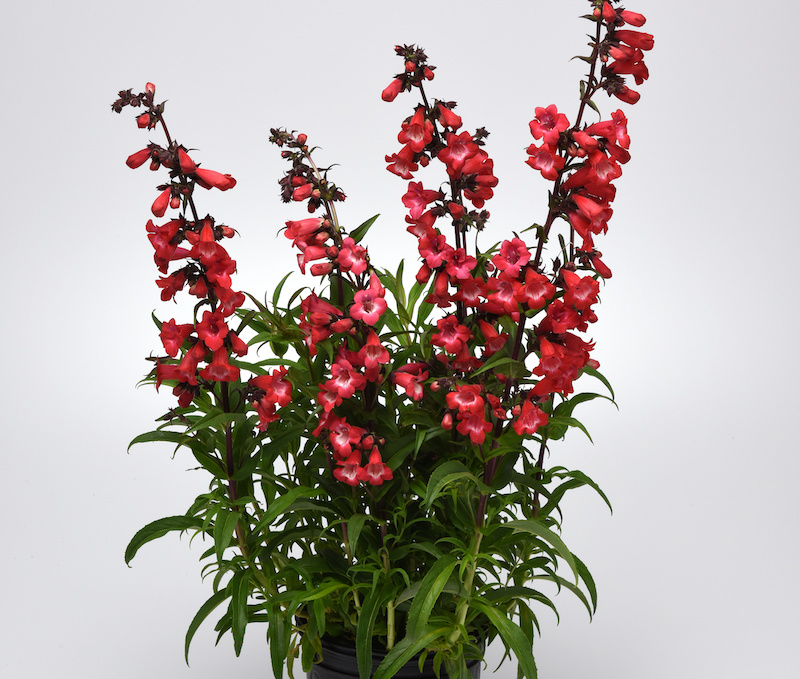Beardtongue plants grow well in pots. Small varieties that reach one foot tall add height to a tabletop planter, while larger cultivars that grow three or four feet tall can frame a door or shield a patio or balcony. Beardtongue takes on a thriller role in a planter. The height that makes them so stunning in a planter makes them a poor choice for hanging baskets.

Planting Beardtongue in Pots
Most Beardtongues grow as perennials, making spring the ideal time to plant them in pots. Wait until there is no longer a chance of frost to plant Beardtongue in pots. Three or four Beardtongue plants can comfortably fit into a 12-inch planter. Place potted Beardtongue in full sun. The planter can be made of any material, but the pot must have drainage. Beardtongue plants like to dry out and cannot survive in constantly wet conditions.
Best Soil For Beardtongue in Pots
Most potting mixes are suitable for growing Beardtongue in pots. The ideal soil should drain well and have a neutral to acidic pH. Add pumice or grit to general potting soil to improve drainage for potted plants. These plants are not heavy feeders, so they do not require rich, fertile soil, but some organic content is beneficial. If creating your own soil mix, include organic compost to enhance soil fertility and mix in pumice, grit, or perlite to provide drainage.
Caring For Beardtongue in Planters
Beardtongues are easy plants to grow and are not demanding. Potted plants have increased water needs; otherwise, these plants are very hands-off like their in-ground counterparts. Growing Beardtongue in pots requires slightly more attention during the winter and , but they are still very low maintenance.
Watering Beardtongue in Pots
Water Beardtongue plants in pots when the soil is dry. Container-grown plants dry out quickly, and Beardtongue plants require bright sunlight, so they will likely need water once or twice weekly depending on where you garden. Feel the soil and water when it is dry, or the plant appears wilted. Beardtongue develops drought tolerance, but it still requires routine watering in containers.

Fertilizing Beardtongue in Pots
Potted plants require more frequent watering, which in turn washes nutrients from the soil. Beardtongue grown in the ground only needs to be fertilized once annually, while potted plants benefit from more frequent fertilizer applications. Feed potted Beardtongue in the spring and mid-summer using a water-soluble fertilizer. A fertilizer low in nitrogen, like one with a 5-10-10 NPK ratio, is ideal for Beardtongue.
Winter Care For Beardtongue in Pots
Winter care is minimal for Beardtongue. These plants are herbaceous perennials, so growth dies back, and the root system is dormant during the winter. Cut back growth in the fall and store the potted plant in a protected area, out of severe weather and excessively wet conditions.
Growing Beardtongue Indoors
Beardtongue is not a good indoor plant in winter because all the growth dies. This plant needs winter dormancy to rest up for the next growing season. If you live at the lower end of Beardtongue’s growing range, keep the pot in an unheated, protected space over winter and bring it outside when the temperature is warm in the spring.
 |
Author Alison Cotsonas - Published 05-03-2023 |
